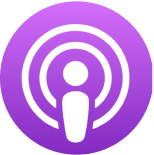The Crucial Role of Career Paths
In today's workforce, employees crave more than just a paycheck. They seek purpose, growth, and the opportunity to develop new skills. This isn't just a "nice to have" but a business imperative. Engaged and growing employees are more productive and are more likely to stay with your company. In the words of Laszlo Bock, it's imperative to "Turn work into a calling, not a job."
Step 1: Define Clear Objectives: Start with the End in Mind
1.1 Identify Skill Gaps and Future Needs
Begin your planning by conducting a skills audit within your organization. What skills are you lacking now, and what will you need in the future? These needs will guide your career development programs and should align with your company's strategic goals.
1.2 Align with Individual Goals
After understanding the organization's needs, the next step is to understand your employees' aspirations. A career path should not just serve the company; it should also serve the individual's career ambitions.
Step 2: Employee Involvement: Make It a Two-Way Street
2.1 Frequent Check-Ins
Regular dialogues between employees and supervisors are crucial. It allows both parties to check the progress, recalibrate goals, and modify the career path as needed.
2.2 Employee Self-Assessment
Encourage employees to engage in self-assessments. This can help them identify their own strengths and weaknesses, and make them more engaged in their own development.
Step 3: Design Personalized Learning and Development Programs
3.1 Tailor-Made Training
Different roles require different skills. Some might require technical training while others might require leadership skills. Personalized training programs allow your employees to acquire the specific skills they need to advance.
3.2 Measure Progress
Metrics should not be an afterthought. Keep track of key performance indicators (KPIs) to know if your training programs are effective and if they are helping employees reach their goals.
Step 4: Establish Feedback and Iteration Loops
4.1 Iterative Feedback Loops
Continuous feedback allows for real-time adjustments and helps keep everyone aligned with their goals. A culture of feedback makes it easier to correct course as needed.
4.2 Revisit and Revise
Career paths should be living documents. As employees grow, their career paths should evolve to match new skills, interests, and company needs.
Step 5: Celebrate Milestones and Successes
5.1 Acknowledge Achievements
Celebrate when employees hit milestones or attain certain skills. This not only motivates the individual but also sets a precedent for a culture of growth and achievement.
5.2 Adjust for New Goals
Once a milestone is achieved, it's time to set new goals. This keeps the employee engaged and always striving for more, thereby perpetuating a cycle of continuous growth and development.
Beyond Just a Guide: Transforming Organizations through Books 2.0
The process of creating employee career paths is a complex but rewarding endeavor. However, reading about it is one thing; implementing it effectively is another. If you're interested in learning more tools and strategies for developing a culture of continuous learning and growth, check out Beyond Reading: Transforming Organizations through Books 2.0. This resource aims to harness the power of books to cultivate a learning culture and develop talent in the era of Artificial Intelligence. It’s a valuable asset for HR and L&D professionals aiming to transform their approach to talent development. For more insights, visit Transforming Organizations with Books.









.webp)

.webp)
